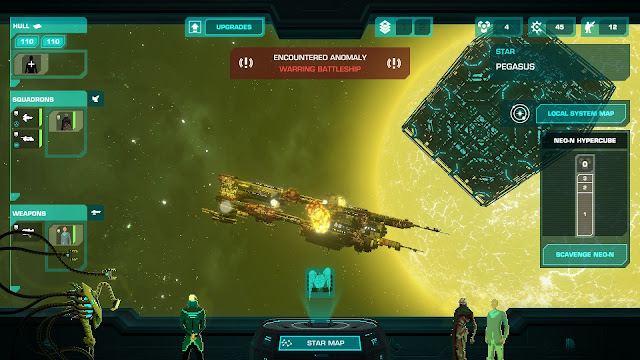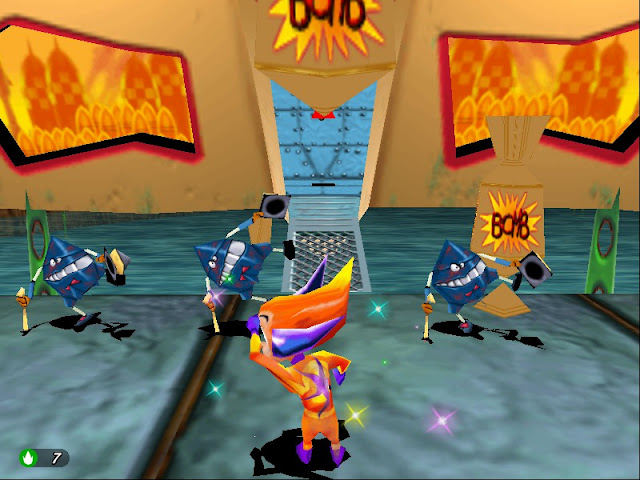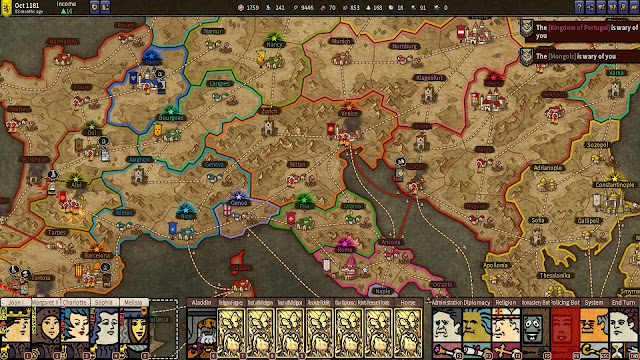Crying Suns Review | Searching hope in a perishing universe
A phenomenon that has been consistent through gaming history is the one where a team of developers gets inspired by a title they played and started having ideas on how to expand it with new mechanics or a more captivating story.
Crying Suns is the product of such phenomenon, with its inspiration being the hit Faster Than Light.
Aesthetics
 |
The morbid sight of a collapsing ship |
The title uses a mixture of 2d pixel art, used for characters and UI, and 3d voxels for the ships and various space objects. The two styles mix well together, they feel consistent and belonging to the same game.
Animations aren't an aspect that got much attention, since most of the action is reserved for the space-ships, there aren't many opportunities to make expressive gestures either, so the characters on the bridge got the bare minimum to not look like still figures.
Because of this, there has been extra care to the particle details, especially when looking an exploding ship after a fight, the effects of the fires and the ship slowly "sinking" out of view give a sense of satisfaction and twisted sadism, one could almost feel sorry for the poor souls aboard, if they weren't trying to kill you and your crew that is. This sentiment is shared for the sound effects, like when hearing the muffled explosions from the aforementioned ship.
No voice acting though, to simulate speech the characters make a noise.
The soundtrack is divided in two categories: one for the exploration phase and one for combat. Both use synthesizer, but differ in overall mood. For the exploration ones, the tracks are slow, almost ambient, definitely giving a sense of melancholy in the vastness of space, the combat are faster, but also less memorable.
In short, appealing visuals if you like 2d pixel art and 3d voxels, decent audio.
Game Mechanics
 |
Preparedness for the tactical fights is the top priority |
The title is a "tactical" strategy game with randomly generated levels. There are many aspects built into this product.
First, is the space travel, in which the player chooses a destination. Try to keep yourself on the move, you are chased by an overwhelming force. Once arrived, one of four things will happen: a fight, a dilemma, a shop stop or a null event.
The fights are executed in a small arena divided in hexagons. In it, the player deploys the squadrons (divided in fighter, frigate, drones and artillery ships) as well as load up the weapons, which depending on the type can either damage the hulls of the space-ships or only the squadrons. The battle is won once the enemy's battleship is destroyed, achieved by damaging the hull either with a squadron in near proximity or using one of the weapons. Keep a keen eye on the battlefield, there may be strategic opportunities, like asteroids clusters that slow down passing ships, but will also prevent any damage for the one stationed in them. Once won and gathered the spoils, it will be possible to move, there is no way to escape the fights, it's either victory or death.
Beyond the fights, there are the dilemmas, in them the player must make a choice, sometimes even without an explicit reward. These dilemmas aren't without risk, it's entirely possible for something to go haywire. However, there are ways to nudge the odds in the player's favor, such as having an officer with a specific skill.
More on the officers, they are special characters that posses an ability and skills. The ability is something that can improve the functions of a section in which the officer has been assigned, assuming the ability is compatible. For example, having an officer with the "repair" ability assigned to the hull will regenerate 2 hit points per second, but yield nothing if put on squadrons or weapons. Skills give extra choices in the dilemmas, allowing for always positive outcomes, assuming there is an officer with that skill on the bridge. A particular kind of dilemma absolutely relying on the officers is the one about the expeditions on planets. To accomplish them, the player needs a certain amount of marines and an officer, depending on the skill of said officer, there will be a different amount of reward and casualties, these two are made absolutely clear when choosing an officer to send, so the risks and benefits are clear and cut.
These systems are flavorful and allow for personalization of strategy, the dilemmas are fine, but also insufficient in number, they ran out when I was half-way done, as such I ended up encountering the same ones very often and already knew the answers to pick.
There are two fundamental resources: scrap and neo-n fuel. Scrap is used as a general currency to buy stuff from merchants, as material required during dilemmas or to upgrade the parts of the ship. Neo-n is used for jumps from system to system and between planets of the same system, it can also be used in neo-n forges to level up a squadron.
Nothing extraordinary or wrong, just make sure to never run out of neo-n fuel, lest your chasers reach you and give you a nasty battle.
While the overall objective for each sector is to reach the end, there are also side quests that the player can take, like rescuing a military base under assault, or escorting someone to a specific star system. They're decent occasions to gain some scrap or extra equipment.
The enemies encountered in the fights are practically equal to the player, meaning that if the player sees something good/powerful, it's possible
to obtain it, assuming the RNG generated a market/event containing that weapon or squadron. This, mixed with the fairly basic but ultimately functional AI, makes the encounters OK to engage.
Not much to say about the difficulty selectors, three going from easy to hard, they influence the amount of resource gained and the overall RNG of the levels.
I have beaten the game in 18 hours
Summarizing, the mechanics works and are fun, but the dilemmas could have received more variety.
Narrative
 |
There is a first for everything |
On a forgotten world, in a forgotten cloning facility, a robot wakes up one of the duplicates. The robot calls itself Kaliban, it says to the newly awakened one that he is one of the many clones of Admiral Ellys Idaho, the best admiral of the imperial army. Kaliban asks the Idaho clone for help, for the "all clear" messages that the Emperor used to send have stopped, it's been 20 years since the last transmission and all the other robotic servitors, called OMNIs, have shut down. It is Ellys Idaho's clone duty, along a crew of clones from the best individuals the empire has to offer and the informational support of Kaliban, to uncover the mystery about the fate of the empire and survive against a hostile galaxy.
From here the adventures starts in the shoes of the admiral.
From the get-go, there are a lot of questions: what's going on? Why can't the Admiral remember the memories of the original Idaho? Who or what shut down the OMNIs? With time, everything will be answered, with some twists being more unexpected than others. Beyond the mysteries, there will be some remarkable moments disjointed from the main thread, like when the crew express their desire to mourn their past selves, even thought they are technically them, because they believe it's the right thing to do.
These small moments of humanity and the questions kept me on playing until the end.
Some secondary stories can be encountered during a run, they're not particularly long, just enough until the end of the cluster, but they offer micro-stories about ruthless/desperate people trying to survive in the ruins of the empire, I tried my best to follow them when they showed up because I found them interesting.
Characterization wise, Idaho gets fleshed out, with pieces of his relationships, personality and beliefs get gradually revealed. The crew doesn't receive much, only a couple of lines, but even with those few the developers tried to squeeze a bit of personality in them. The bosses receive a personality too, expressed through their inspired
henchmen, when they face the player, and when they express their confessions before dying. The hired officials, however, don't have any kind of characterization or personality, all the lines they say during the possible encounters are generic lines repeated by all of them without flavor.
The backstory of the empire and the universe is revealed in bits delivered with the progression of the run, sometimes by the defeated bosses, sometimes by random events that trigger a series of question to pose at Kaliban and other times through the scattered remains of still broadcasting satellites.
It's rather cool, the player can only catch fragments of the whole picture, making the discovery more intriguing.
In conclusion, the story is above average for a randomly generated game and it has a some cool out of the norm elements.
Recommendation:
I am pleased that Crying Suns doesn't just limit itself to copy its source material, but makes an actual effort to have its own identity, coming out ultimately as an enjoyable experience.
Available on Steam, Gog, Android and iPhone.




Comments
Post a Comment